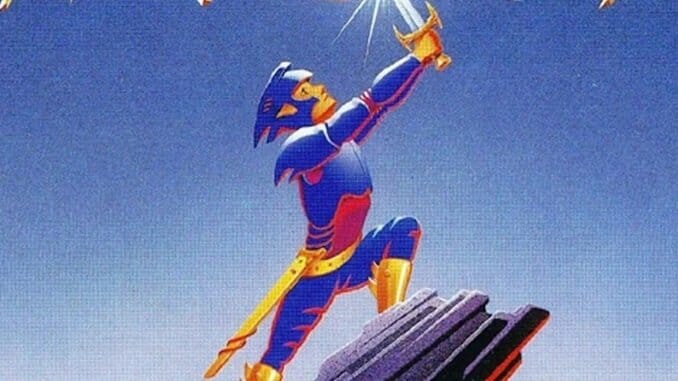Final Fantasy: Mystic Quest Is the Best Final Fantasy You’ve Never Played

Final Fantasy: Mystic Quest is the scent of a Blockbuster plastic clamshell. Those sharp plastic notes that combined with the faded but trapped scents of too many strangers’ homes—a little beef stew, some dog, a rethinking-her-whole-life soccer mom’s boosted-from-a-Macy’s-by-accident-or-maybe-just-to-feel-something’s tester of Clinique Calyx that leaked in her handbag when she was in a rush to drop the rental off because her kid had left it half under the couch with the game not even in the case before he bolted for school. The accumulated scent of “den” from a time before man caves, or your own television in your own room. If Mystic Quest could have a smell, it would smell like a ‘90s suburban adolescence and all that weirdness and banality wrapped up in one.
Mystic Quest was reviewed pretty okay at the time, but despite that I remember classmates trying to joke on me for liking the game. And I guess history has forgotten that GamePro gave it a 4 out of 5, preferring to remember the position of kids who never grew out of Mortal Kombat fatalities being the best videogames could offer. Mystic Quest carried a reputation into the 21st century of being too simple, too short, and graphically ugly. And since videogames have an institutional memory problem, it’s a good time to revisit this invigorating classic.
In the early 1990s, Square decided they had a problem: shitty American kids weren’t buying enough JRPGs from them. Sure, they had some success with Final Fantasy, and the toned-down for America “Final Fantasy II” (which we now correctly know as Final Fantasy IV), but the market just wasn’t reaching the critical mass Square needed (and wouldn’t achieve until Final Fantasy VII blew the doors off everything). Kids were too busy with The Legend of Zelda: A Link to the Past and Bill Laimbeer’s Combat Basketball, and then there were all the weirdos who couldn’t get enough True Golf Classics: Waialae Country Club. American kids loved videogames, but they weren’t loving Squaresoft’s JRPGs enough.
Clearly this was because they were too difficult, too complicated, and fussily self-involved.
The original Final Fantasy wasn’t a simple, nice game like Dragon Warrior (I refuse to budge on this one) that let you keep half your gold and your progress when you died (though fuck the magidrakees, for real). It was a game that let you get paralyzed and obliterated by a five-pack of Sorcerers because you always lost the initiative roll. Squaresoft was making JRPGs from the “Fuck You, This Is Wizardry” school. Which admittedly, is not everyone’s cup of tea. While Final Fantasy IV was made gentler for US audiences, it wasn’t enough, and Square’s executives decided that they had to make a game that put American needs first, and that what America Needed was a JRPG so profoundly truncated, so simple a child could demolish it. America needed the Fisher Price of JRPGs.
They needed Final Fantasy: Mystic Quest. Which, in Japan, would be known as Final Fantasy USA: Mystic Quest, despite being made by Square’s development team in Japan.
It had to be simple to understand, with a world that the player couldn’t get lost in, that wasn’t so threatening, and didn’t one-shot an entire party. In fact, why have a real party at all?
Mystic Quest strips the Final Fantasy core down even further, jettisoning the need to buy equipment and spells, or choose a party composition. Even the dreaded random encounter tables are replaced by enemies you can see and plan ahead for. It takes the bricks out of the backpack for new players. Rather than the maximalist Final Fantasy we’re used to, this is the reduction of Final Fantasy to its Joseph Campbell essentials.
-

-

-

-

-

-

-

-

-

-

-

-

-

-

-

-

-

-

-

-

-

-

-

-

-

-

-

-

-

-

-

-

-

-

-

-

-

-

-

-








































